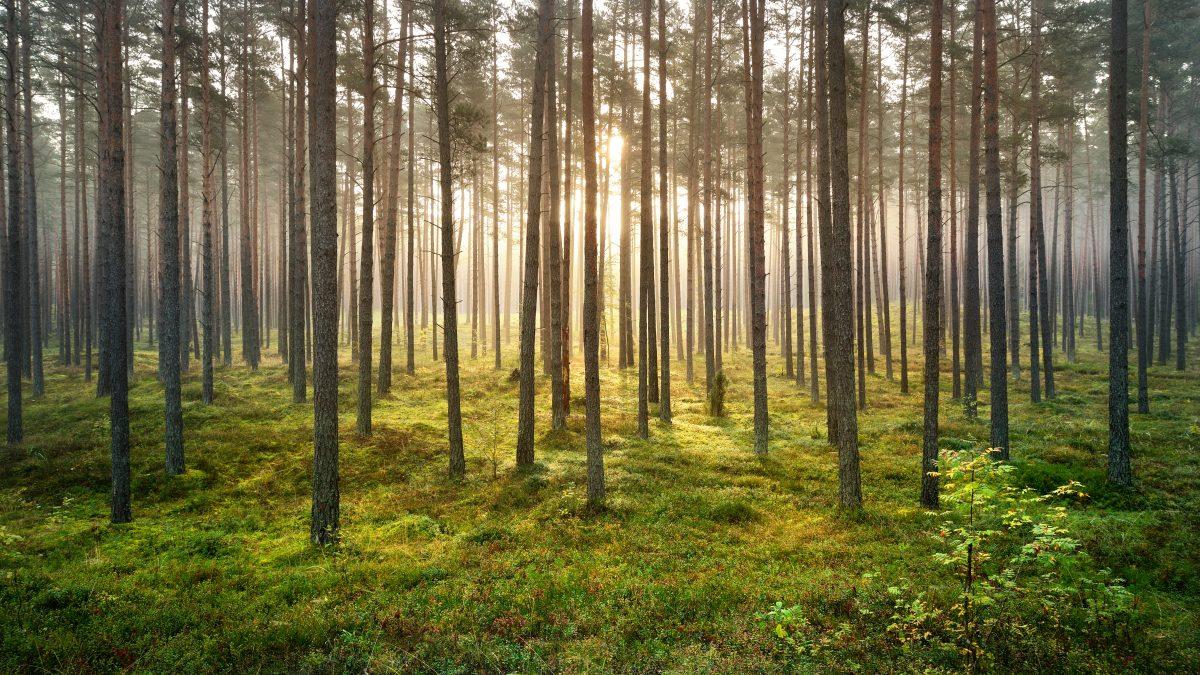Habitat loss and deforestation are one of the most critical threats currently facing Earth’s biome. It is no secret that forests provide indispensable biodiversity to keep the planet’s ecosystems in balance, but more than that, they are crucial components in Earth’s equilibrium of chemical elements and gasses.
We’ve covered comprehensively here on the EcoWatt blog that one tree absorbs ~21kg of carbon each year. The benefits of this absorption cannot be understated. With the amount of CO2 that mankind is dumping into Earth’s atmosphere, these carbon absorption machines are our ticket to survival. Leveraging this ticket as best as we possibly can, organisations around the world are working to ensure that there are enough mature trees to stabilise the amount of CO2 in our atmosphere.
These organisations are working to prevent extensive deforestation as well as repopulate previous forests that once were thriving biological ecosystems. But one of the challenges with forest repopulation is determining the right balance of biodiversity. An easy method is to plant new trees of the same species just as their mature counterparts are removed for various consumption purposes, this is known as “reforestation”. But something a little more nuanced is the work of planting new forests where there were none before, this is known as “afforestation”. So let’s take a look at the difference…

The Difference Between Reforestation And Afforestation
Reforestation is a very common form of sustainable forestation. Many timber, fuel, and paper companies use this method to consume trees within a specific space and re-plant new trees in a sustainable way. Once an area and environment has been assessed and evaluated, the right species of tree is identified, and often planted at intervals that are adequate for a plantation to replenish its population within good time.
Afforestation on the other hand is primarily driven by the need of capturing carbon in the atmosphere. With such frighteningly high levels of CO2 in the atmosphere, scientists and eco friendly organisations are frantically identifying vast open spaces of land in order to plant as many trees as is humanly possible. IE. Afforestation is the planting of new trees and new forests where before there was only smaller forms of plant life.
Afforestation can come with a fair set of challenges, because in many areas identified, there are already complex ecosystems in place. These ecosystems rely on smaller, thinner grasses for instance, or open patches of land for sunlight or grazing. Planting entire forests in these areas can have a negative impact on these ecosystems, which is why thorough research is needed before new forests can be planted.
There is no doubt that large trees planted en masse are crucial tools in the fight against man-made climate change, but it is seriously irresponsible to do so at the detriment of other equally important biospheres.

Ecowatt’s Forestation Work
At Ecowatt, our forestation projects are carefully researched and surveyed before going ahead, and make use of the best scientific data to ensure as little negative impact is made on local ecosystems as possible. We currently have multiple reforestation projects on the go as this blog is being written:
Uganda: Reforestation
With the explosion of coffee culture globally, Uganda has seen horrific deforestation in key regions in order to plant coffee beans. The same can be said for banana crops as well.
Part of Ecowatt’s work in this region has been to educate families who have planted coffee or banana crops in unsustainable fashion, and now sit with very little because these crops have been severely hampered by mudslides in the rainy season. These mudslides occur because the now removed forests acted as natural binding agents for the soil.
Ecowatt is helping these families re-plant deep rooted, multi-purpose trees intercropped with the banana and coffee plantations in order to stabilise soil during the rains and also improve soil fertility, thereby increasing yields, food security and income.
We have partnered with the “Trees for the Future” organisation on a “Forest Garden Program” to train 500 families in the area to plant enriching trees and teach sustainable farming practices. The program has a goal to plant a total of one million trees, and with government support we are planning to scale this project and plant a further 100 million trees by 2025.
Hungary: Afforestation
We are delighted at the development of our first “Ecowatt Nature Park” in Hungary! It will be the first of its kind, with a 6000 hectare plot of land in the Eastern European Country being transformed into a thriving and diverse forest environment.
Part of the project includes the rewilding of numerous keystone animal and plant species, because many of them have disappeared due to unsustainable construction projects in the middle of the twentieth century. Human development of dams, bridges and roads has wrought havoc on certain regions, and this first Ecowatt Nature Park will remove specific human artefacts and reintroduce flagship species along with the planting of over 100,000 biologically diverse trees to ensure a sustainable biome.
In Conclusion
Reforestation is not the only carbon capture process available in our fight against climate change. Afforestation, when done sustainably, can be a critical element as well.
Both forms of environmental fightback require different types of research and engineering, and must be approached and leveraged with wisdom and discretion. As a company committed to the longtime survival of all species on Earth, the sustainability of our work is paramount, which is why we are so dedicated to using the right methods for the right place and time.
References:
Afforestation:
Siberian Elm Trees:
https://en.wikipedia.org/wiki/Ulmus_pumila
Rewilding in Biology:
Keystone animal species:

